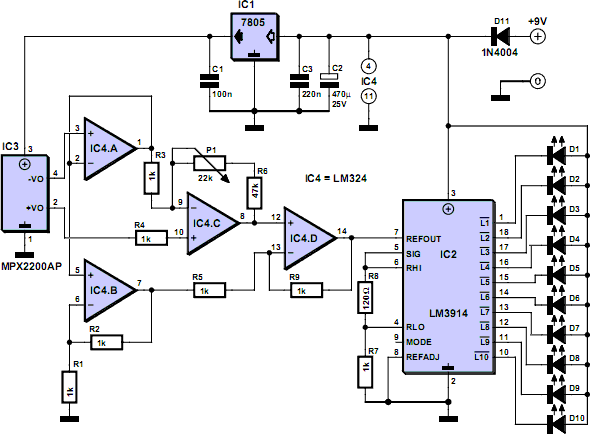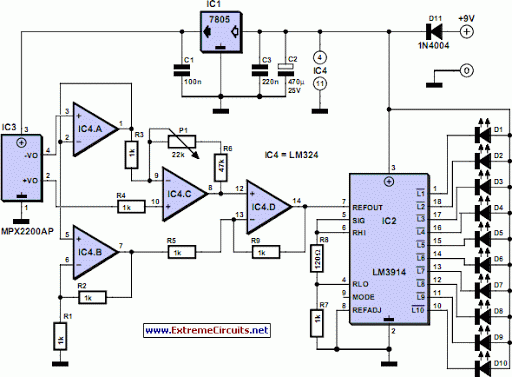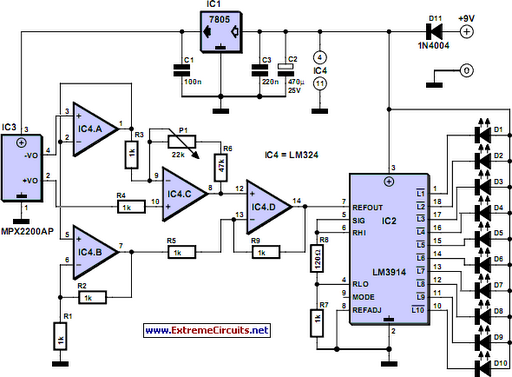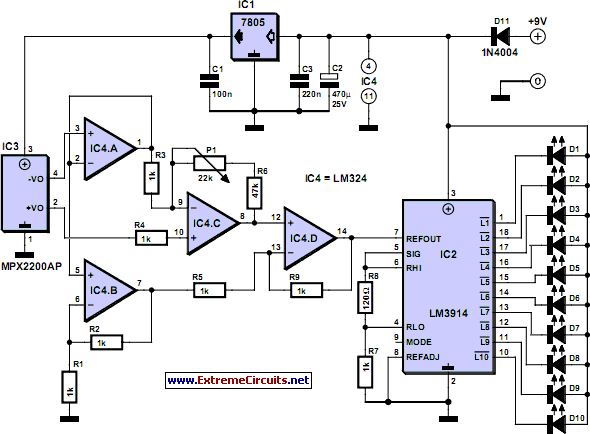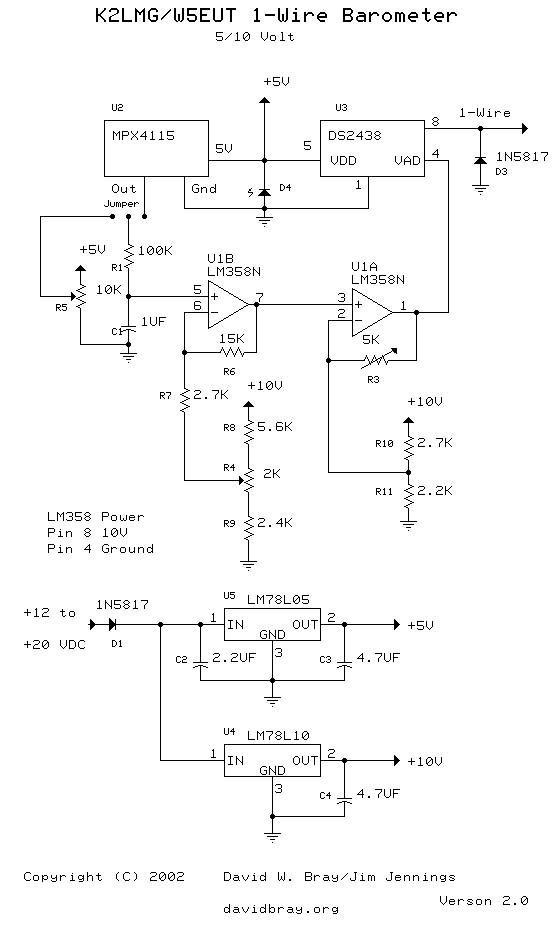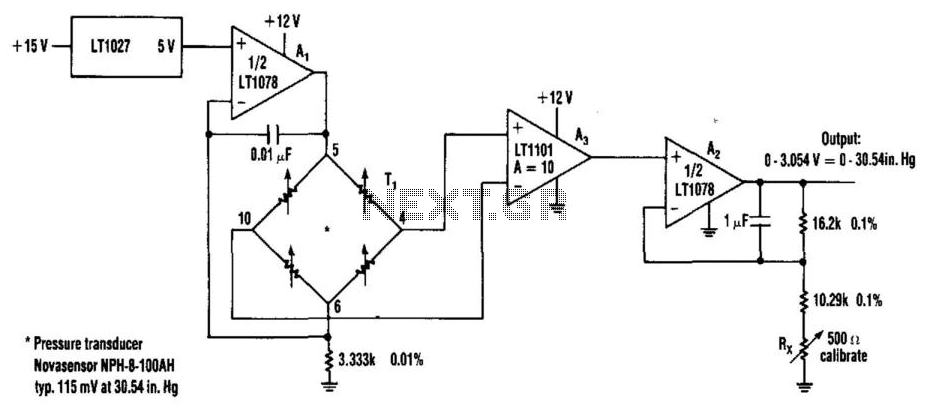
Barometer
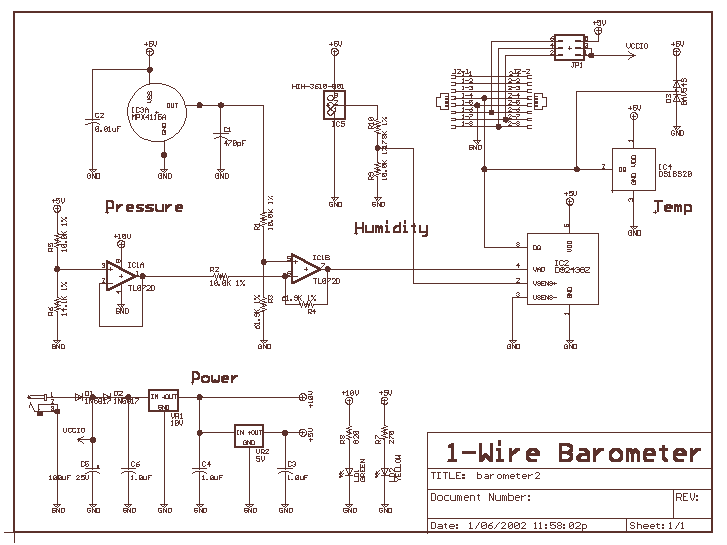
The Bray Barometer requires manual calibration for voltage offset and gain. Although practical on the workbench, these devices are most likely mounted in inconvenient locations making secondary adjustment difficult. The Bray Barometer uses potentiometers for offset and gain adjustments. Potentiometers are notoriously temperature sensitive, and sensitive to hostile environments. More: * By only using a single 5V power supply, the Bray barometer cannot utilize the full 1.5-10V range of the DS2438's Analog to Digital Converter (ADC); by using a higher voltage input we can improve instrument range or sensitivity. * The Printed
The Bray Barometer operates by measuring atmospheric pressure and translating this measurement into an electrical signal. The device requires manual calibration to ensure accurate readings, which involves adjusting the voltage offset and gain settings. This calibration process is typically conducted on a workbench, where access to the device is straightforward. However, once installed in a location that is not easily accessible, performing these adjustments becomes challenging.
The barometer employs potentiometers for both offset and gain adjustments. While these components are effective for fine-tuning measurements, they are inherently sensitive to temperature variations and can be adversely affected by harsh environmental conditions. This sensitivity can lead to fluctuating readings, necessitating frequent recalibration under varying environmental circumstances.
Moreover, the Bray Barometer is designed to operate with a single 5V power supply. This limitation restricts the utilization of the full voltage range available from the DS2438's Analog to Digital Converter (ADC), which operates effectively within a range of 1.5V to 10V. By integrating a higher voltage power supply, the performance of the barometer could be significantly enhanced, allowing for improved measurement range and sensitivity. This adjustment would enable the device to yield more precise readings, particularly in applications requiring high accuracy.
In terms of circuit design, it is crucial to consider the placement of the potentiometers and the overall layout of the circuit to minimize the impact of temperature variations. Additionally, incorporating protective measures against environmental factors can further enhance the reliability and longevity of the Bray Barometer in various applications.The Bray Barometer requires manual calibration for voltage offset and gain. Although practical on the workbench, these devices are most likely mounted in inconvenient locations making secondary adjustment difficult. The Bray Barometer uses potentiometers for offset and gain adjustments. Potentiometers are notoriously temperature sensitive, and sensitive to hostile environments. * By only using a single 5V power supply, the Bray barometer cannot utilize the full 1.5-10V range of the DS2438`s Analog to Digital Converter. (ADC), by using a higher voltage input we can improve instrument range or sensitivity. * The Printed 🔗 External reference
The Bray Barometer operates by measuring atmospheric pressure and translating this measurement into an electrical signal. The device requires manual calibration to ensure accurate readings, which involves adjusting the voltage offset and gain settings. This calibration process is typically conducted on a workbench, where access to the device is straightforward. However, once installed in a location that is not easily accessible, performing these adjustments becomes challenging.
The barometer employs potentiometers for both offset and gain adjustments. While these components are effective for fine-tuning measurements, they are inherently sensitive to temperature variations and can be adversely affected by harsh environmental conditions. This sensitivity can lead to fluctuating readings, necessitating frequent recalibration under varying environmental circumstances.
Moreover, the Bray Barometer is designed to operate with a single 5V power supply. This limitation restricts the utilization of the full voltage range available from the DS2438's Analog to Digital Converter (ADC), which operates effectively within a range of 1.5V to 10V. By integrating a higher voltage power supply, the performance of the barometer could be significantly enhanced, allowing for improved measurement range and sensitivity. This adjustment would enable the device to yield more precise readings, particularly in applications requiring high accuracy.
In terms of circuit design, it is crucial to consider the placement of the potentiometers and the overall layout of the circuit to minimize the impact of temperature variations. Additionally, incorporating protective measures against environmental factors can further enhance the reliability and longevity of the Bray Barometer in various applications.The Bray Barometer requires manual calibration for voltage offset and gain. Although practical on the workbench, these devices are most likely mounted in inconvenient locations making secondary adjustment difficult. The Bray Barometer uses potentiometers for offset and gain adjustments. Potentiometers are notoriously temperature sensitive, and sensitive to hostile environments. * By only using a single 5V power supply, the Bray barometer cannot utilize the full 1.5-10V range of the DS2438`s Analog to Digital Converter. (ADC), by using a higher voltage input we can improve instrument range or sensitivity. * The Printed 🔗 External reference
